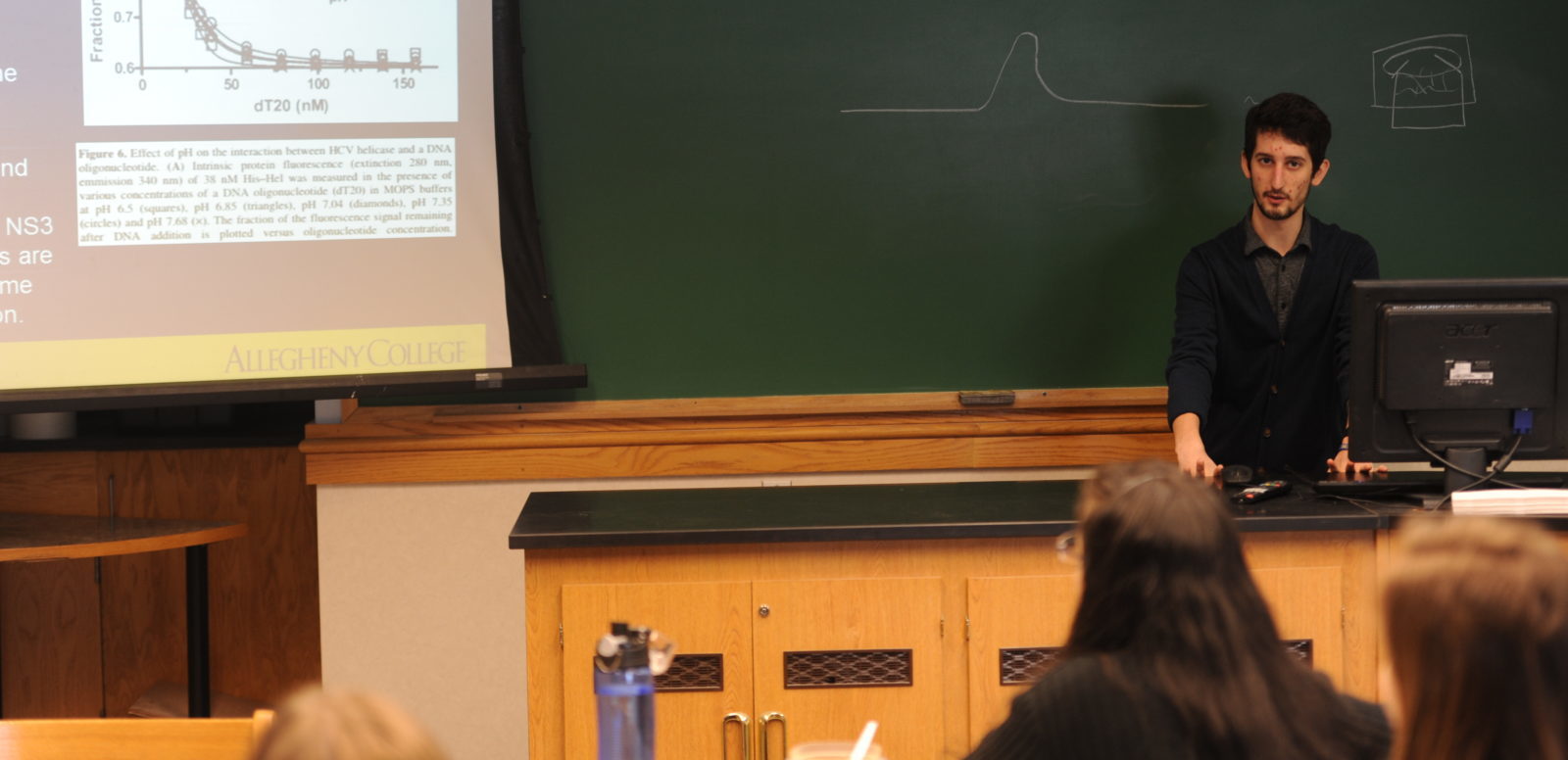
The Senior Comp
complete and defend the Senior Comp, an intensive research thesis
Chemistry majors frequently present their findings at regional and national meetings; successful projects can lead to publication in professional journals. Seniors also often present their results at the department’s annual Senior Project Symposium.
Senior Projects that recently earned department honors:
- Template Synthesis of a Facially Coordinated Triphosphine Macrocycle for Biomimetic Hydrogen Production
- Probing the Mechanism of Nucleic Acid Hairpin Formation Using Rapid Salt Jump StoppedFlow Kinetics Experiments
- Analysis of Poly(ethylene oxide)-b-poly(e-caprolactone) Isothermal Crystallization Using TD-FTIR Spectroscopy
- An Examination of the Effects of 3’-halogenation on Aromatic CH-pi interactions Using Molecular Torsion Balances
- The Effect of Alkyl Chain Length of Poly(3-alkylthiophene-2,5-diyl) on Solar Cell Efficiency in Inverted Bulk-Heterojunction Organic Photovoltaic Cells
- Reactions of Sulfonyl Allenes and Sulfonyl Ene-Allenes with Bromine and Perfluoroalkyl Radicals
- Towards Detection of Microcystin-LR on Gold-Coated Nanosurfaces
- Probing the Mechanism of Frustrated Lewis Pair Activity through Study of a Decomposition Reaction and the Application of Imine Reduction
Summer Research
Most chemistry students spend at least one summer conducting research. The Department of Chemistry has an active funded summer research program, and Allegheny students are also successful at obtaining internships at other institutions through the National Science Foundation’s Research Experiences for Undergraduates Program.
Independent Study
Chemistry majors can get involved in research during the academic year by enrolling in a Chemistry Independent Study (CHEM 590). In a CHEM 590 experience, students take part in an ongoing research project under the direction of a faculty member.
Selected Publications with Student Co-authors
- Ams, M. R.; Fields, M.; Grabnic, T.; Janesko, B. G.; Zeller, M.; Sheridan, R.; Shay, A. Unraveling The Role of Alkyl F on CH−π Interactions and Uncovering the Tipping Point for Fluorophobicity. The Journal of Organic Chemistry 2015, 80, 7764–7769.
- Dishler, A. L.; McMichael, E. L.; Serra, M. J. Determination Of the Secondary Structure of Group II Bulge Loops Using the Fluorescent Probe 2-Aminopurine. RNA 2015, 21, 975–984
- Mason, J.; Murphree, S. Microwave-Assisted Aqueous Krapcho Decarboxylation. Synlett. 2013, 24, 1391–1394.
- Sikora, J. R.; Rauzan, B.; Stegemann, R.; Deckert, A. Modeling Stopped-Flow Data For Nucleic Acid Duplex Formation Reactions: The Importance of Off-Path Intermediates. The Journal of Physical Chemistry B 2013, 117, 8966–8976.
- Garcia, I.; Albring, M. J.; Uhlenbeck, O. C. Duplex Destabilization By Four Ribosomal DEAD-Box Proteins. Biochemistry 2012, 51, 10109–10118.